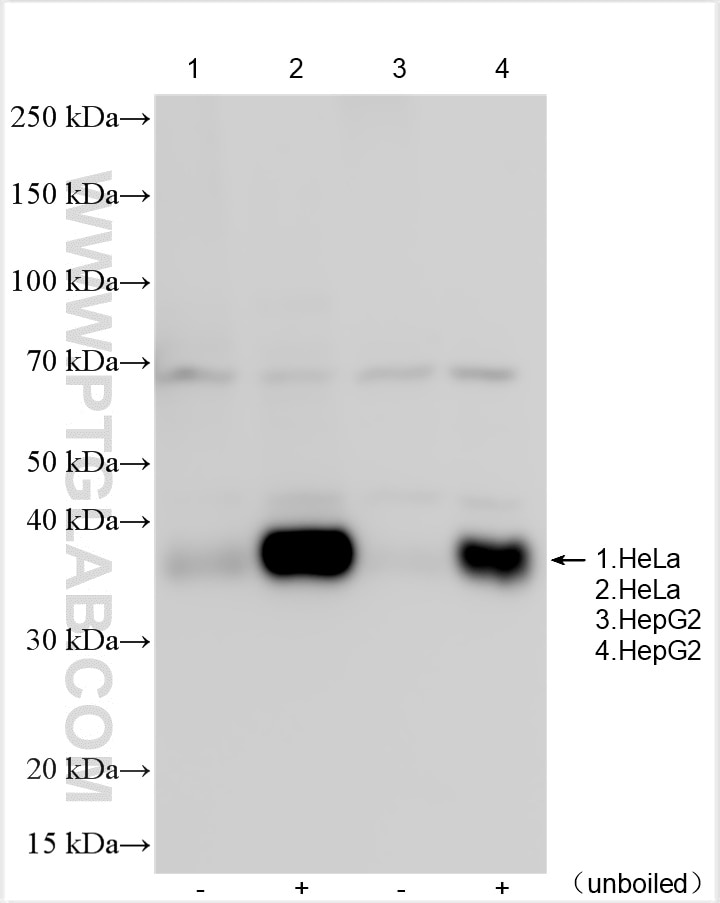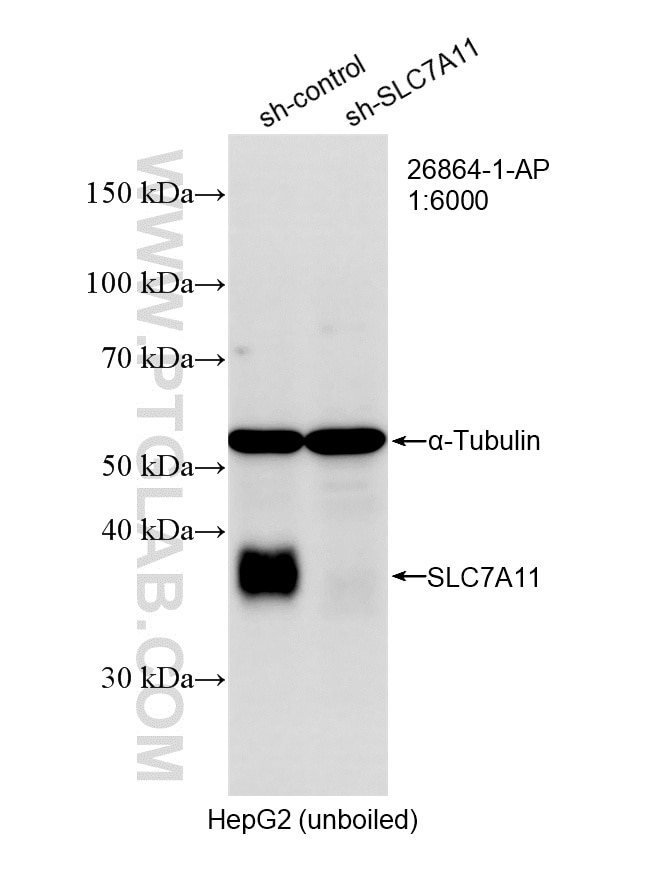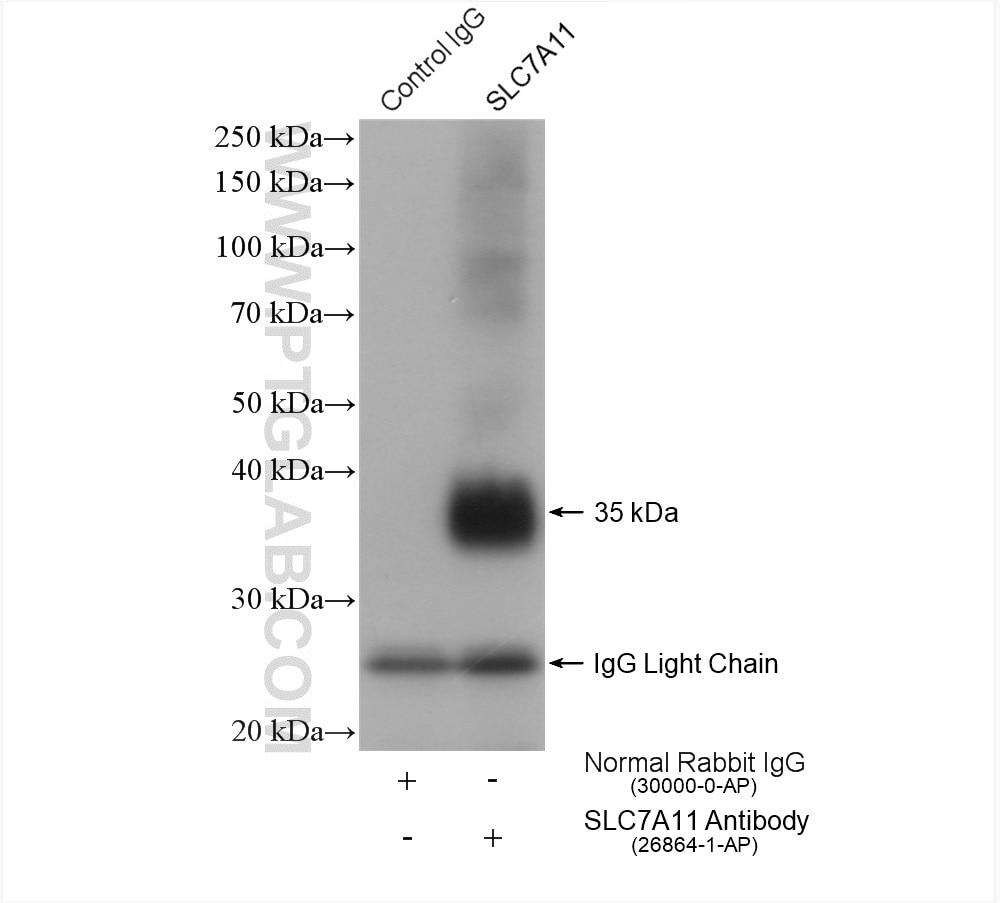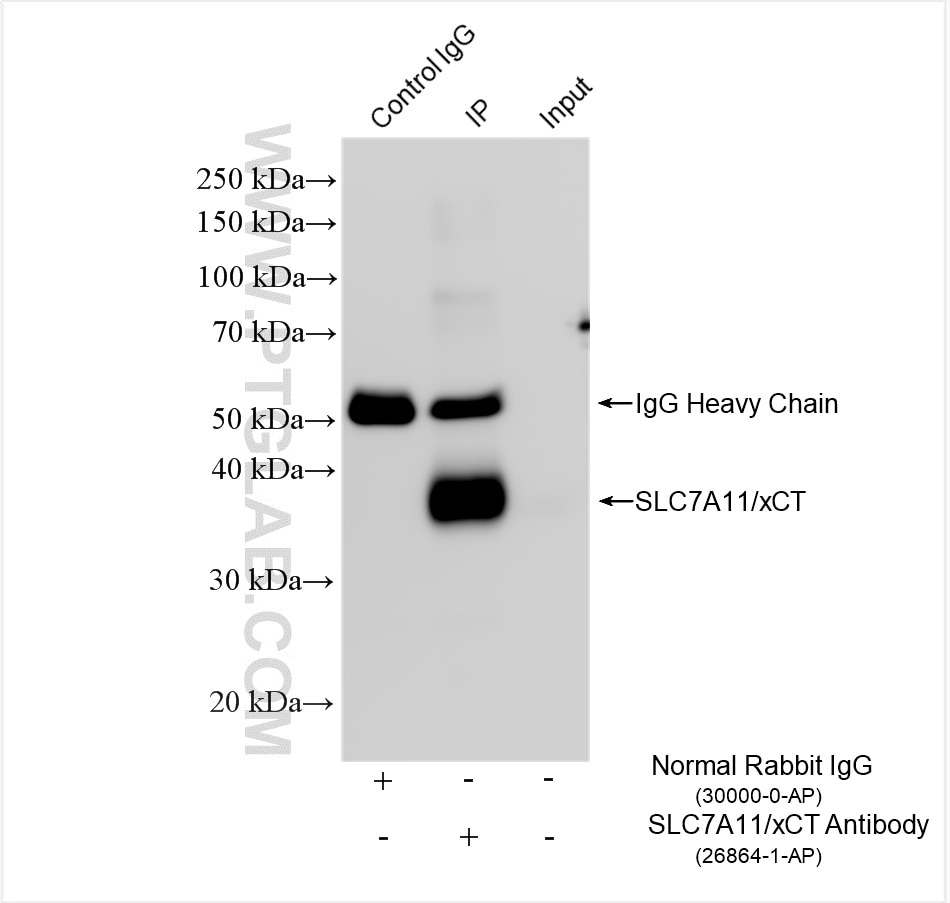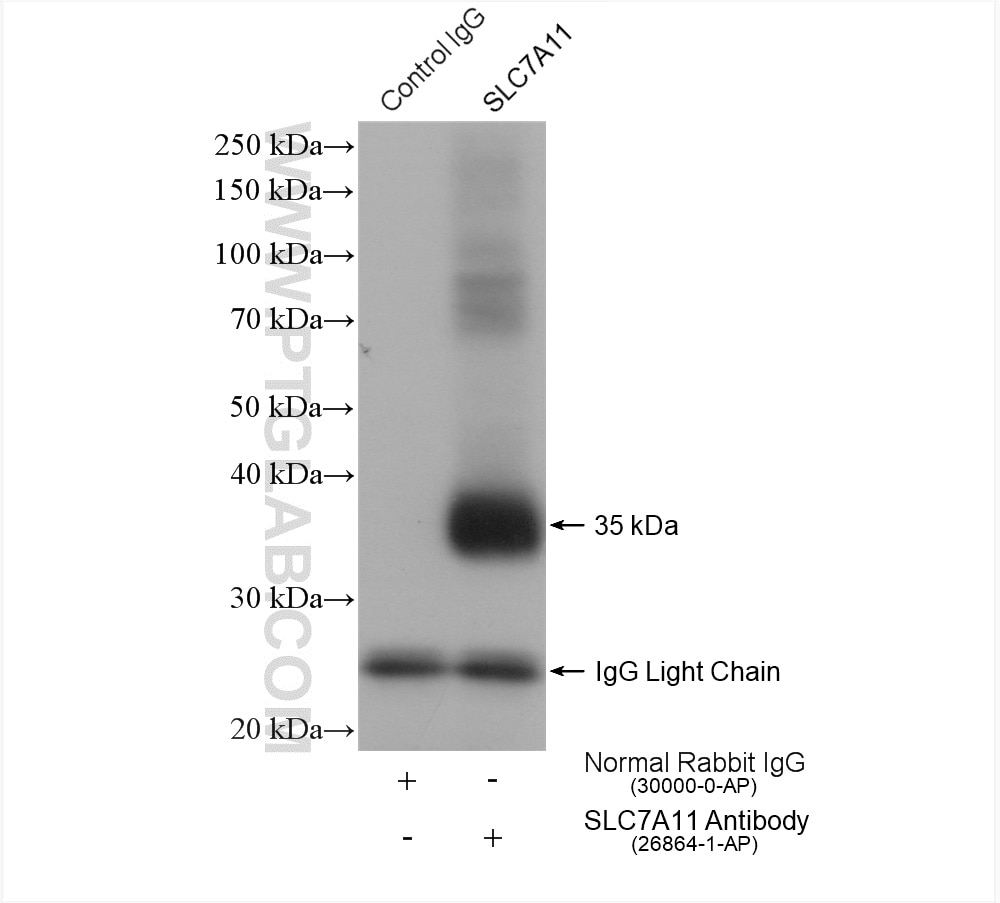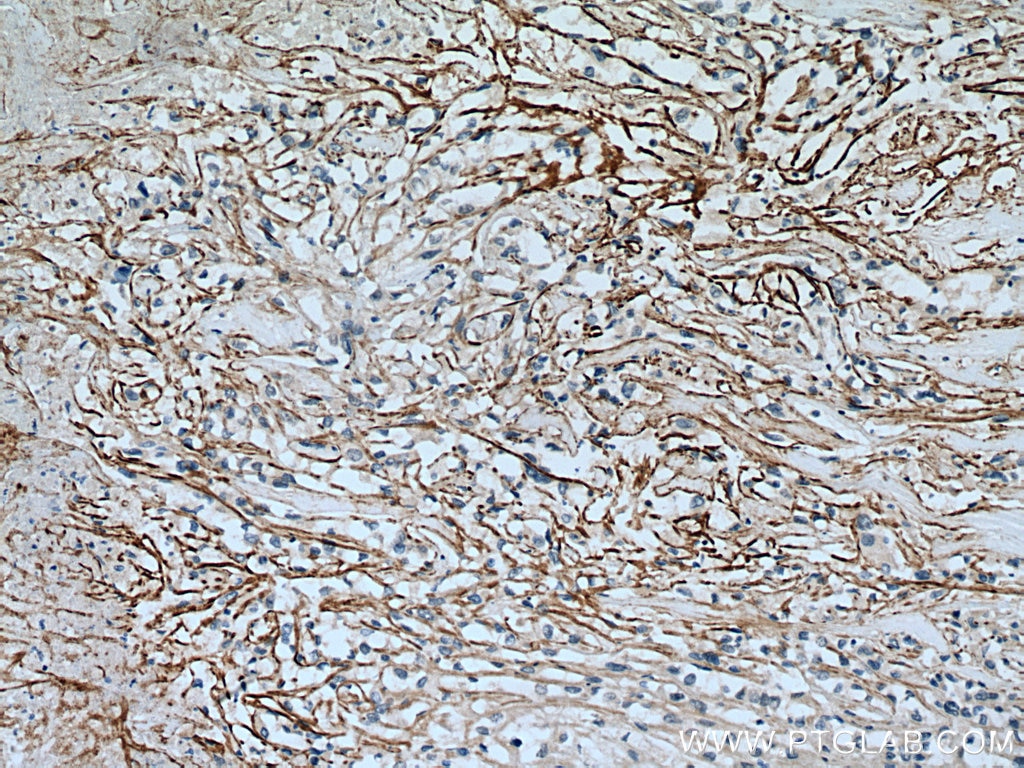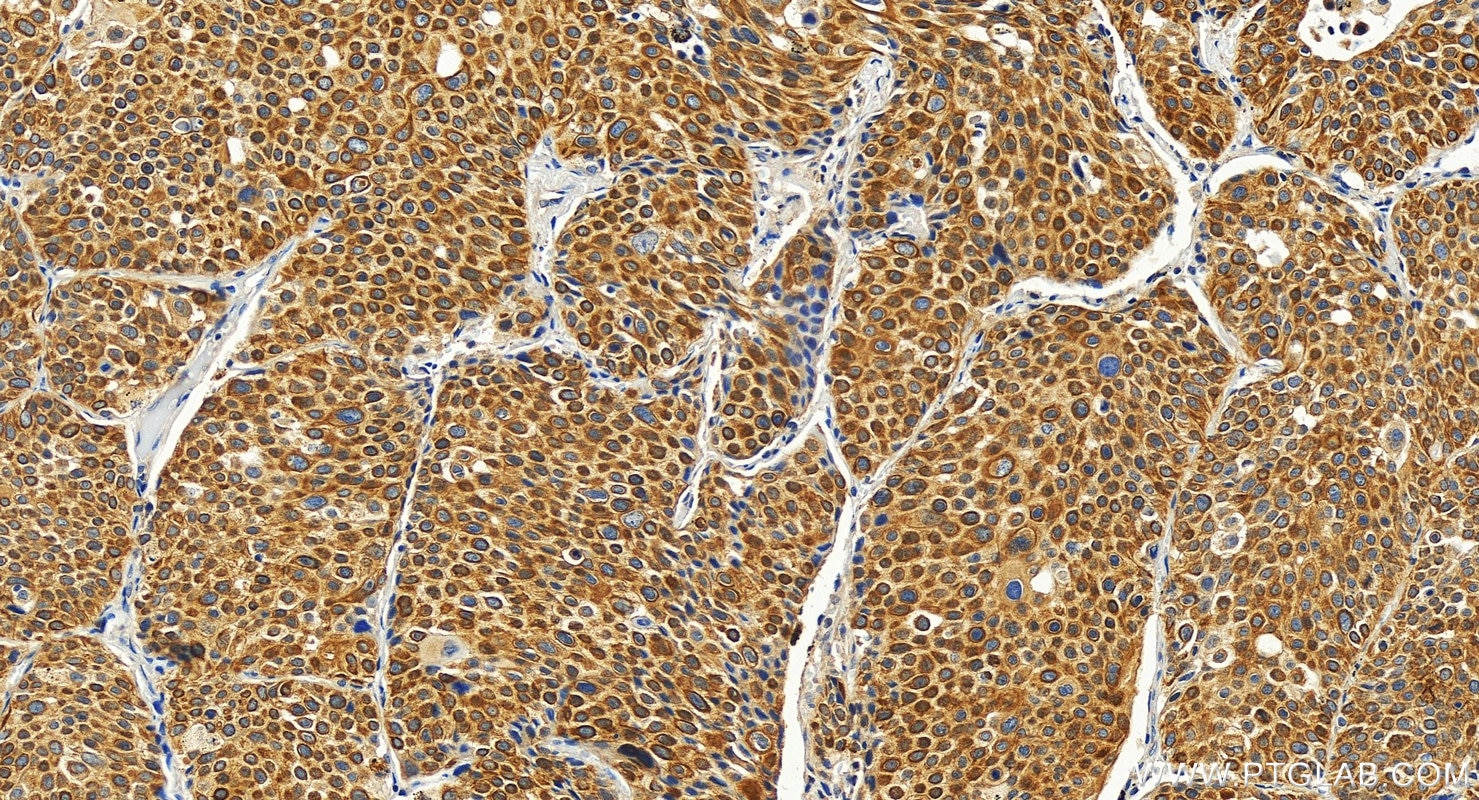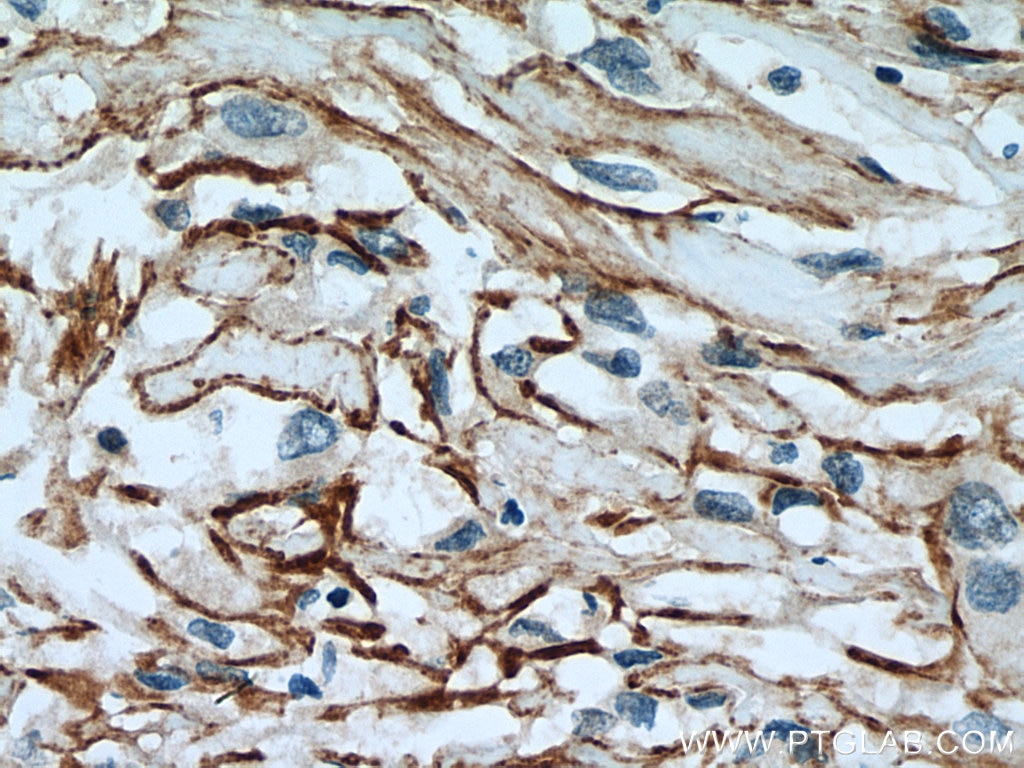Validation Data Gallery
Tested Applications
| Positive WB detected in | unboiled HeLa cells, HeLa cells, HepG2 cells, unboiled HepG2 cells |
| Positive IP detected in | HeLa cells, A549 cells, HepG2 cells |
| Positive IHC detected in | human renal cell carcinoma tissue, human lung cancer tissue Note: suggested antigen retrieval with TE buffer pH 9.0; (*) Alternatively, antigen retrieval may be performed with citrate buffer pH 6.0 |
For optimal WB detection with 26864-1-AP, we do not recommend boiling the sample after lysis.
Recommended dilution
| Application | Dilution |
|---|---|
| Western Blot (WB) | WB : 1:1000-1:4000 |
| Immunoprecipitation (IP) | IP : 0.5-4.0 ug for 1.0-3.0 mg of total protein lysate |
| Immunohistochemistry (IHC) | IHC : 1:50-1:500 |
| It is recommended that this reagent should be titrated in each testing system to obtain optimal results. | |
| Sample-dependent, Check data in validation data gallery. | |
Product Information
26864-1-AP targets SLC7A11/xCT in WB, IHC, IF, IP, CoIP, RIP, ELISA applications and shows reactivity with human samples.
| Tested Reactivity | human |
| Cited Reactivity | human, chicken, bovine, sheep, goat |
| Host / Isotype | Rabbit / IgG |
| Class | Polyclonal |
| Type | Antibody |
| Immunogen |
CatNo: Ag25431 Product name: Recombinant human SLC7A11 protein Source: e coli.-derived, PGEX-4T Tag: GST Domain: 1-42 aa of BC012087 Sequence: MVRKPVVSTISKGGYLQGNVNGRLPSLGNKEPPGQEKVQLKR 相同性解析による交差性が予測される生物種 |
| Full Name | solute carrier family 7, (cationic amino acid transporter, y+ system) member 11 |
| Calculated molecular weight | 55 kDa |
| Observed molecular weight | 35-40 kDa |
| GenBank accession number | BC012087 |
| Gene Symbol | SLC7A11 |
| Gene ID (NCBI) | 23657 |
| RRID | AB_2880661 |
| Conjugate | Unconjugated |
| Form | |
| Form | Liquid |
| Purification Method | Antigen affinity purification |
| UNIPROT ID | Q9UPY5 |
| Storage Buffer | PBS with 0.02% sodium azide and 50% glycerol{{ptg:BufferTemp}}7.3 |
| Storage Conditions | Store at -20°C. Stable for one year after shipment. Aliquoting is unnecessary for -20oC storage. |
Background Information
SLC7A11 (also known as xCT) is a membrane transporter involved in the uptake of cystine. It promotes glutathione synthesis through the uptake of cystine and the concomitant release of glutamate. This, in turn, protects cells from oxidative stress, maintains cellular redox balance, and prevents cell death induced by lipid peroxidation. SLC7A11 has been identified as a potential target for cancer therapeutics. It is overexpressed in multiple malignant tumors and is closely associated with the growth, prognosis, metastasis, and treatment response of various cancers including lung cancer. The SLC7A11 protein appears at two molecular weights, 55 kDa and 35 kDa, and the 55 kDa protein is ubiquitinated(PMID: 32188872). 26864-1-AP recognizes the 35-40 kDa protein similar to the paper published (PMID: 36747082).
Protocols
| Product Specific Protocols | |
|---|---|
| IHC protocol for SLC7A11/xCT antibody 26864-1-AP | Download protocol |
| IP protocol for SLC7A11/xCT antibody 26864-1-AP | Download protocol |
| WB protocol for SLC7A11/xCT antibody 26864-1-AP | Download protocol |
| Standard Protocols | |
|---|---|
| Click here to view our Standard Protocols |
Publications
| Species | Application | Title |
|---|---|---|
Cell Res Mitochondria-localized cGAS suppresses ferroptosis to promote cancer progression | ||
Cell Host Microbe Liberation of daidzein by gut microbial β-galactosidase suppresses acetaminophen-induced hepatotoxicity in mice | ||
Drug Resist Updat Upregulation of CoQ shifts ferroptosis dependence from GPX4 to FSP1 in acquired radioresistance | ||
Nat Immunol Glutathione peroxidase 4-regulated neutrophil ferroptosis induces systemic autoimmunity. | ||
ACS Nano Engineering MMP-2 Activated Nanoparticles Carrying B7-H3 Bispecific Antibodies for Ferroptosis-Enhanced Glioblastoma Immunotherapy | ||
Nat Commun Injectable ECM-mimetic dynamic hydrogels abolish ferroptosis-induced post-discectomy herniation through delivering nucleus pulposus progenitor cell-derived exosomes |

